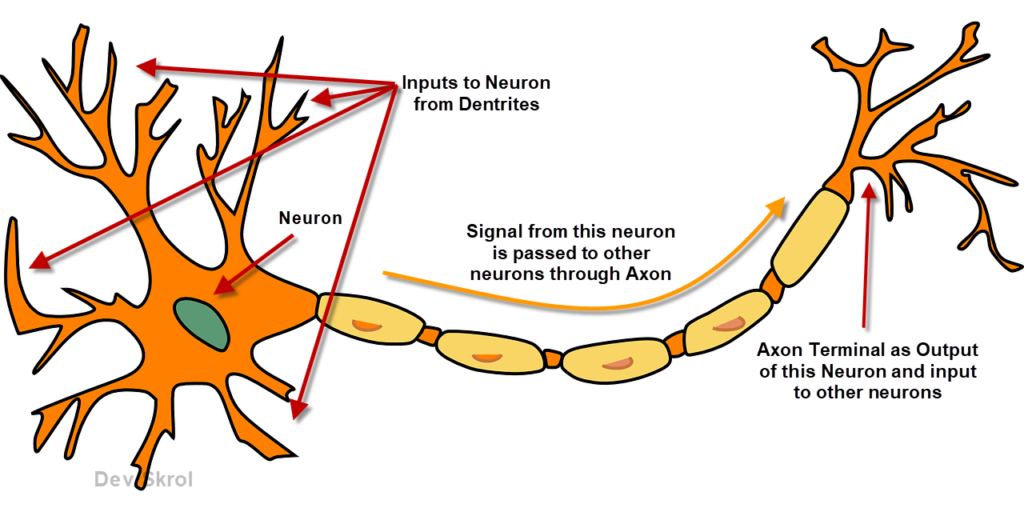Have you ever wondered How Artificial Neuron mimics neurons in human brain? We will see the Architecture of Artificial Neurons and its components in detail in this article.
It all started when the neurons in brain of Warren McCulloch and Walter Pitts received a stimulus to research about our human neurons.
In 1943, A neurophysiologist Warren McCulloch and a young mathematician Walter Pitts published a paper “A logical calculus of the ideas immanent in nervous activity”.
From this paper, they provided the research on the neuron of human brain and their understanding on making an artificial neuron.
How human neuron works?
In Physiology, a stimulus (Example: touch, sound, light etc) is a thing or event that evokes a specific functional reaction in an organ or tissue. Neurons in brain takes a major role in this process.

- When we see an object or touch a thing, (for example: we touch fire) a stimulus is received, the impulse is conducted to the neurons in brain via its Dentrites.
- Neurons in brain works with respect to “all-or-none” law. If the stimulus is strong enough (i.e. above a certain threshold value), then the neuron fires otherwise it does not fire.
- If the neuron fires the signal, then either it communicates signals to other neurons or to muscles or glands via Axons.
McCulloch and Pitts replicated this action in Artificial neuron.
How Artificial Neuron works?
An artificial neuron model consists of 4 components. Below is the architecture of an Artificial Neuron.
Architecture of Artificial Neuron:

Input Layer:
An input layer takes one or more inputs as digits where each input is assigned with a random weight.
Neuron:
An artificial neuron is a mathematical function processes the input data, and supplies it to a non-linear activation function.
A neuron finds the sum of product of input and its weights + bias.

Activation Function:
A human neuron will work with the principle of “all-or-none”. But the output of the artificial neuron can be any value as it is a sum of product of weights and inputs. The result need not to be 0 or 1.
To make this value binary to match it with “all-or-none” law, we need to process this result before passing it as an output of the model such that it will be binary.
Activation Function converts the linear output of the neuron to non-linear.
There are various types of activation functions which provides results with slight difference.

Rectified Linear Activation Function (ReLU):
Keeps any value greater than 0 as it is.
Converts any value <0 as 0.
ReLU works as max (0, x)
Tanh:
If the value is > 1 then converts it as 1.
If the value is < -1 then converts it as -1.
Tanh works as tanh(x)
Sigmoid:
If the value is > 0.5 then it will be converted to 1, if the value is < 0.5 then it will be 0.

Exponential Linear Unit (ELU):
As same as ReLU, ELU keeps any value > 0 as it is.
If the values are negative, ELU will accept the negative value for certain range.

Output:
In an Artificial single Neuron model, the output value will be a value which is based on the input and the activation function which is chosen for the Network.
What is a Perceptron?
A neural Network with an input layer and a single hidden layer is called a Perceptron.
Conclusion:
Aren’t you excited about know the reason for why we react to a thing we see or touch?
Yes, Human brain is a fabulous organ in our entire body which controls all functions of the body.
We will learn more about Neural Network and Deep Learning in next articles.
Thank you for reading our article and hope you enjoyed it.
Like to support? Just click the like button ❤️.
Happy Learning!🎈
Thanks to:
http://wwwold.ece.utep.edu/research/webfuzzy/docs/kk-thesis/kk-thesis-html/node12.html





Good explanation Asha! Thanks for posting
Thank you Srikanth!